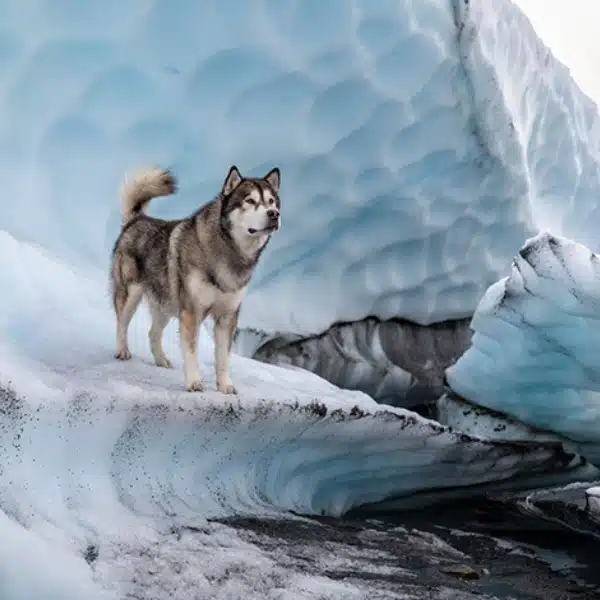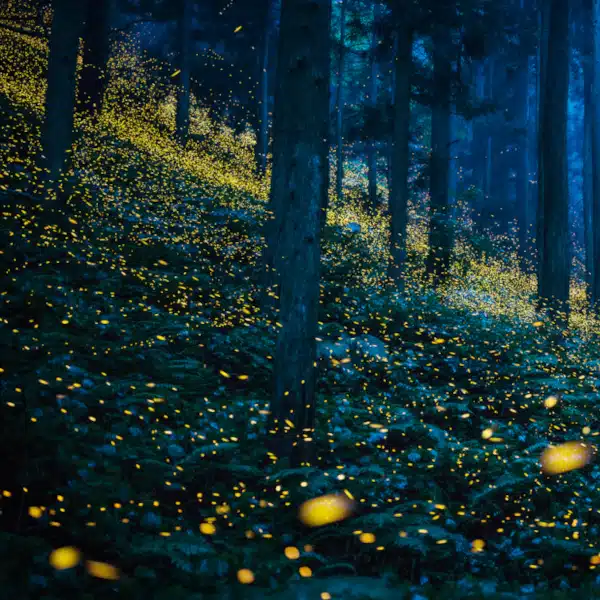If you've followed our journey here on My Modern Met, you are probably familiar with the work of Kyle Thompson. We've featured Kyle's incredible talent and striking self portraits many times over the years. Today we wanted to touch base with a behind the lens look into his largest series, “Ghost Town.”
Inspired by his childhood fight with depression, Kyle created “Ghost Town” as a means of understanding the sadness he felt in his earlier years. He began his journey into photography by documenting the abandoned homes he would find in rural Illinois. Throughout the series, you can see a continuation of his early photographic roots with the use of abandoned homes he came across in his travels. By showing the darker side of human emotions, his visuals represent the vacant and lonely feelings of depression, allowing him to create a deeply emotional connection with viewers. The portraits are so raw and haunting you can't help but feel for the characters. We were so moved by the vulnerability of this series, we had to inquire further into the story.
Tell us a bit about yourself.
My name is Kyle Thompson, and I am a photographer living in Portland, OR. I use photography as a form of emotional release, and base my work on my life experiences.


How did you become interested in photography?
After I graduated high school, I had to drive an hour into rural Illinois every weekend to pick up my brother. I started noticing abandoned houses littering the sides of the road, and I started to explore them. I had a friend come with, and we would use his parents' camera to shoot photos inside. I mostly used photography as a way to document the places I found, and later started adding more thought behind the images.
Where do you find inspiration for your “Ghost Town” series?
The images in ghost town relate to my childhood, and experiences I had growing up. I was deeply depressed for nearly my entire childhood, and the images are meant to feel vacant and suffocating in that way. I wanted to capture these lonely and claustrophobic scenes. The sets are based on my childhood home, and items that felt relative or significant to me while growing up.


What are your most important photography tools?
Well for one thing, I use a remote timer a bunch, which is unusual for most self portrait photographers. Usually people use a standard remote, where you push a button and it takes a photo. With the remote timer however, you program in a time delay, intervals, and the number of photos. So for example, I could set it to wait 20 seconds, then take 30 photos with 3 seconds in between each photo. This is super useful, since you can focus of your body movement more, and not have anything in your hands. It also makes it way easier to shoot self portraits in water, or far away from the camera or whatever.
What is on your must have list for each shoot?
Lately I've been using a 24-105 4.0 lens a ton. Its really nice, and its the first time I've moved away from prime lenses in a while. I almost always sketch out an image before I shoot, so bringing a sketchbook along with my ideas is also usually necessary. I'm really bad at coming up with ideas on the spot, so having an idea before I go out to shoot is usually required for me as well.


How much planning goes into creating a piece?
It definitely depends on the image. I usually go out to shoot a couple times a week, and the complexity of a photo changes. So, for example, with my ghost town series, I bought a pool, built some sets in it (which included picking out wallpaper, moving huge furniture, creating a color scheme, etc), filled it with water, and shot in it. So those images took a lot of planning. However some times, I will just go out with a simple idea, shoot it in 10 minutes, and leave. Usually its somewhere in the middle though. Drawing out ideas, and listing what I'll need in order to create the work helps a lot.
How do you choose your models?
I basically only shoot photos of my friends or myself. I think it deals mostly with the comfort level I have in doing that. Also I think they are able to put up with more time consuming, or difficult photos than others might be up for.
What do you look for in a location?
I usually like for my locations to not be too distracting. With most of my images, the location is meant more as a background to give some context, rather than a focal point. So locations that are simple, with a repetitive shape are always good. I'm also always exploring abandoned places for photographic locations, so I think variety is always good.


How did you find the abandoned locations for the series?
In my “Ghost Town” series, I have two images shot at an abandoned house. We were actually in Utah, and found a flooded abandoned house by the side of the road. I guess it used to be part of a town, but a dam broke in the 80s, and flooded the place. I went into the water, which ended up being horrible because it was so cold and slimy. I was also in the middle of a month-long camping trip, so that wasn't fun, haha. For other abandoned houses, I just drive around and look for the signs (tall grass, broken windows, broken mailbox etc.)
Can you tell us a bit about how you post process your images?
Yeah, for the “Ghost Town” series, I didn't do much compositing. For images with compositing, I would shoot both images at the same time, with the same light, so they match up correctly. I used the expansion method for these images, mostly to create a higher image resolution. This involves panning the camera around while you shoot, and manually stitching the images together. I use color curves and selective color for color editing. Usually adding contrast, slight split tones with red/cyan and blue/yellow, and turning yellows more cyan.

Do you have any plans for the future of the series?
I had an exhibition for a series recently which was exciting. I'd definitely like to show it around a bit more, and maybe make a small booklet with the images. I'm done shooting images for the series for now though. It was the largest cohesive series I've worked on, so I'm really proud of it.
Do you have any advice for aspiring photographers?
Especially when you're starting out, you should experiment as much as possible. It's great to be inspired by a certain style or artist, but you should also try other styles out as well. Even if you don't stick with it, it would teach you new techniques that you could apply within your own work. Just constantly figure out things to improve, and try to make each image better than the last!




Thank you so much Kyle! You can check out more of the photographer's work on his website.
Are you a photographer? Would you like to be interviewed for our Behind The Lens series? Leave your links in the comments below!























































































